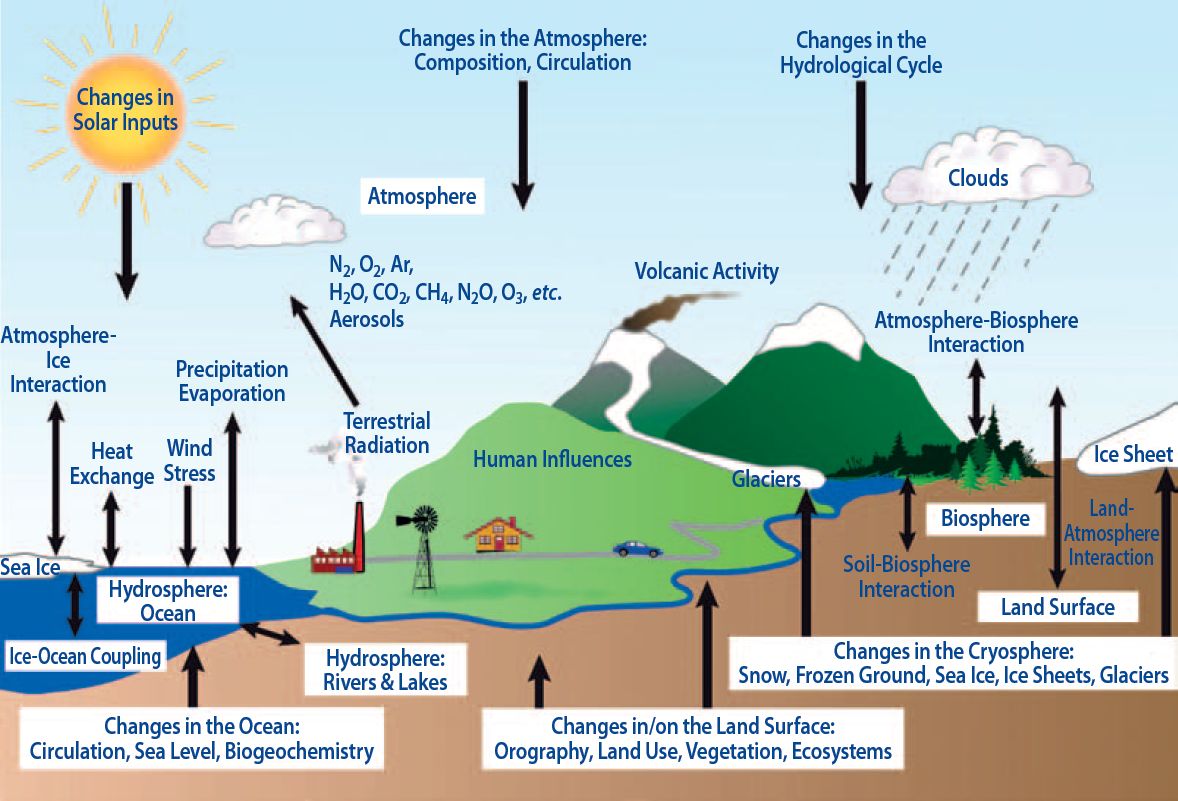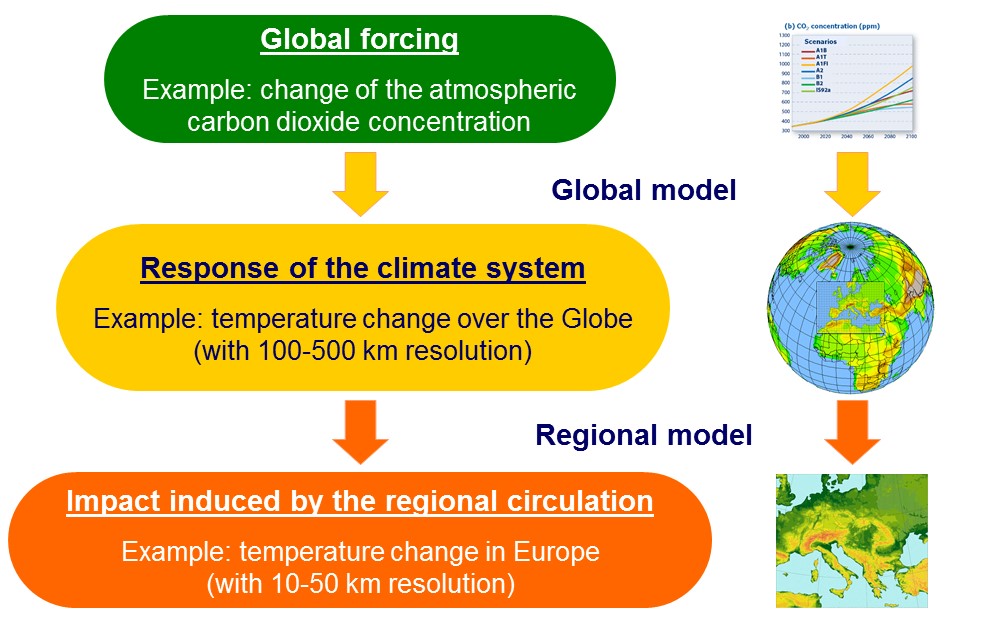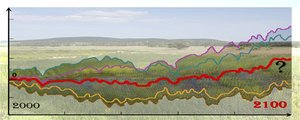Future climate change is estimated based on similar scientific methods as the weather predictions. Before introducing the background of climate modelling, let us define what climate is and how it differs from weather. Weather is the instantaneous state of the atmosphere or its behaviour during a couple of hours, days, weeks. It is described by actual values or changes of the atmospheric variables (temperature, pressure, wind speed etc.). The climate system (or Earth system) is composed of the atmosphere, the hydrosphere, the cryosphere, the land surface and the biosphere, including highly non-linear feedbacks between them (Figure 1). The climate system components have a variety of adjustment time scales due to their different natures. Therefore, climate is characterized by statistical quantities of the meteorological variables along multi-decadal periods (e.g., 30-year mean temperature, frequency of extreme events).
Figure 1
The global climate system and its key interactions
The key drivers of the Earth system are the incoming solar radiation, its atmospheric transfer (reflection, scattering, absorption) and its geographical distribution. The processes influencing any part of the radiation transfer have impact on the total energy budget, and thus also on the climate. Climate forcings can be naturals ones, like the cyclical alteration of Earth’s orbital parameters (with periods of 10-100 000 years) or the volcanic eruptions affecting a few years. Furthermore, humans can also modify the total energy budget via emission of greenhouse gases and aerosol particles. The anthropogenic activity has grown so since the second half of 19th century that it can have significant influence on the evolution of climate processes.
Physical processes governing the climate system are formulated as mathematical equations, which can be solved only with numerical methods. Coupled global climate models consisting of several (atmospheric, ocean etc.) model components are capable of describing the behaviour of the complex Earth system. In these models, the impact of the human activity is taken into account as external forcings through the atmospheric concentration of greenhouse gases. There are several pathways of the future socio-economic developments, therefore, climate simulations are called projections (instead of forecasts) reflecting to their hypothetical nature.
Nowadays, state-of-the-art global climate models developed at recognized climate research centres are able to realistically simulate the behaviour of the climate system components together with their inter-relations. Furthermore, they provide a basis for the description of the planetary (global, large-scale) features of the climate change. However, due also to their high computational need, their applicability to obtain information about regional aspects of the climate change is limited. Thus regional climate models (RCMs) are used to amend the large-scale global information with the desired fine-scale details over the area of interest (Figure 2). Running these models requires lower computing capacity, so they can be applied with higher resolution, even by research institutes of smaller countries. At the Hungarian Meteorological Service two RCMs, ALADIN-Climate and REMO are used for estimation of future climate change in the Carpathian Basin.
Figure 2
The regional climate change as a response for a global climate forcing
Climate projections include uncertainties deriving from chaotic nature of the climate system on the one hand, and on the other hand, from imperfections of the numerical models (e.g., from the different numerical and parametrization methods, the scenario-based description of the future anthropogenic activity). The correct interpretation of the climate projections contains information about their likelihood. This can be achieved with the ensemble technique, i.e., with joint evaluation of several climate model experiments. In this case, users can make more objective decisions based on the probabilistic climate information than using results of a single projection.
Regional climate models serve information on the meteorological aspects of climate change. At the same time, meteorological changes have essential impacts on our life and environment (e.g., human health, agriculture production, natural habitats). To assess these effects objectively, impact studies are needed based on detailed quantitative input data ensured by regional climate models. We dedicate special efforts to provide consultations and trainings for our users and decision makers to support them in the right interpretation of the model products.













